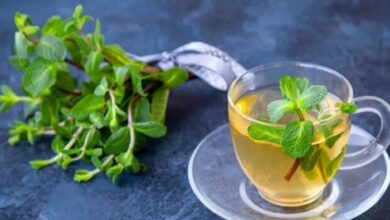Matcha: The Japanese Superfood Taking the World by Storm

Matcha is a type of tea that has been consumed in Japan for centuries. This tea variety differs from the conventional green tea preparation method, which entails steeping tea leaves in hot water and subsequently discarding them. This means that when you drink matcha, you consume the entire tea leaf rather than just the water infused with the tea leaves flavour and nutrients.
This tea variation has gained immense popularity in the health and wellness community in recent years due to its various health benefits. This article aims to delve into the reasons behind its superfood status and offer suggestions on how to include it in your diet.
Health Benefits
The tea’s popularity largely stems from its abundant antioxidants. These are elements that safeguard the body against the negative impact of free radicals, which are molecules that can damage cells and lead to diseases like heart disease, cancer, and diabetes. Matcha contains a particularly powerful type of antioxidant called catechins, which are believed to be responsible for many health benefits.
It is also rich in compounds called polyphenols, which have been shown to have anti-inflammatory properties. Chronic inflammation is linked to different health problems, including arthritis, asthma, and cancer, so consuming foods that reduce inflammation can help to improve overall health and well-being.
In addition to its antioxidant and anti-inflammatory properties, this type of tea is also a good source of caffeine. However, unlike coffee, which can cause jitters and crashes, this tea provides a more sustained and balanced energy boost thanks to the presence of a compound called L-theanine. L-theanine is an amino acid that increases relaxation and helps counteract caffeine’s negative effects, such as anxiety and insomnia.
How to Use
This type of tea has a unique, slightly bitter taste that can take some getting used to, but it can be incorporated into a wide range of recipes to add flavour and nutrition. Here are some ideas for how to use this tea in your cooking and baking:
- Latte: Whisk a teaspoon of tea powder into hot water or milk and sweeten to taste with honey or maple syrup for a delicious and energising latte.
- Smoothies: Add a scoop of tea powder to your favourite smoothie recipe for an antioxidant-packed boost.
- Baked Goods: Use the powder in place of some of the flour in recipes for muffins, pancakes, or quick bread for a pop of colour and nutrition.
- Ice Cream: Make homemade ice cream by whisking the powder into a mixture of heavy cream, sugar, and egg yolks before churning in an ice cream maker.
- Salad Dressing: Whisk the powder into a simple vinaigrette for a delicious and healthy salad dressing.
Where to Buy
If you’re interested in trying this type of tea for yourself, there are a few things to remember when shopping for it. Look for a high-quality powder that is bright green and has a slightly sweet, grassy aroma. The lower-quality powder may be brownish and have a more bitter taste.
The tea powder is found at many health food stores and online retailers. When buying online, read reviews and check the expiration date to ensure you get a fresh, high-quality product.
Matcha is a remarkable and flexible superfood that can offer several health advantages when consumed as part of a balanced diet. You can integrate this tea into your everyday regimen in a latte, smoothie, or baked good form, as there are countless options available. However, it’s essential to keep in mind that although it can be a beneficial addition to your diet, it should not be solely relied upon as a solution for health issues. Similar to any food or supplement, consuming this tea in moderation while following a nutritious and varied diet is crucial.



